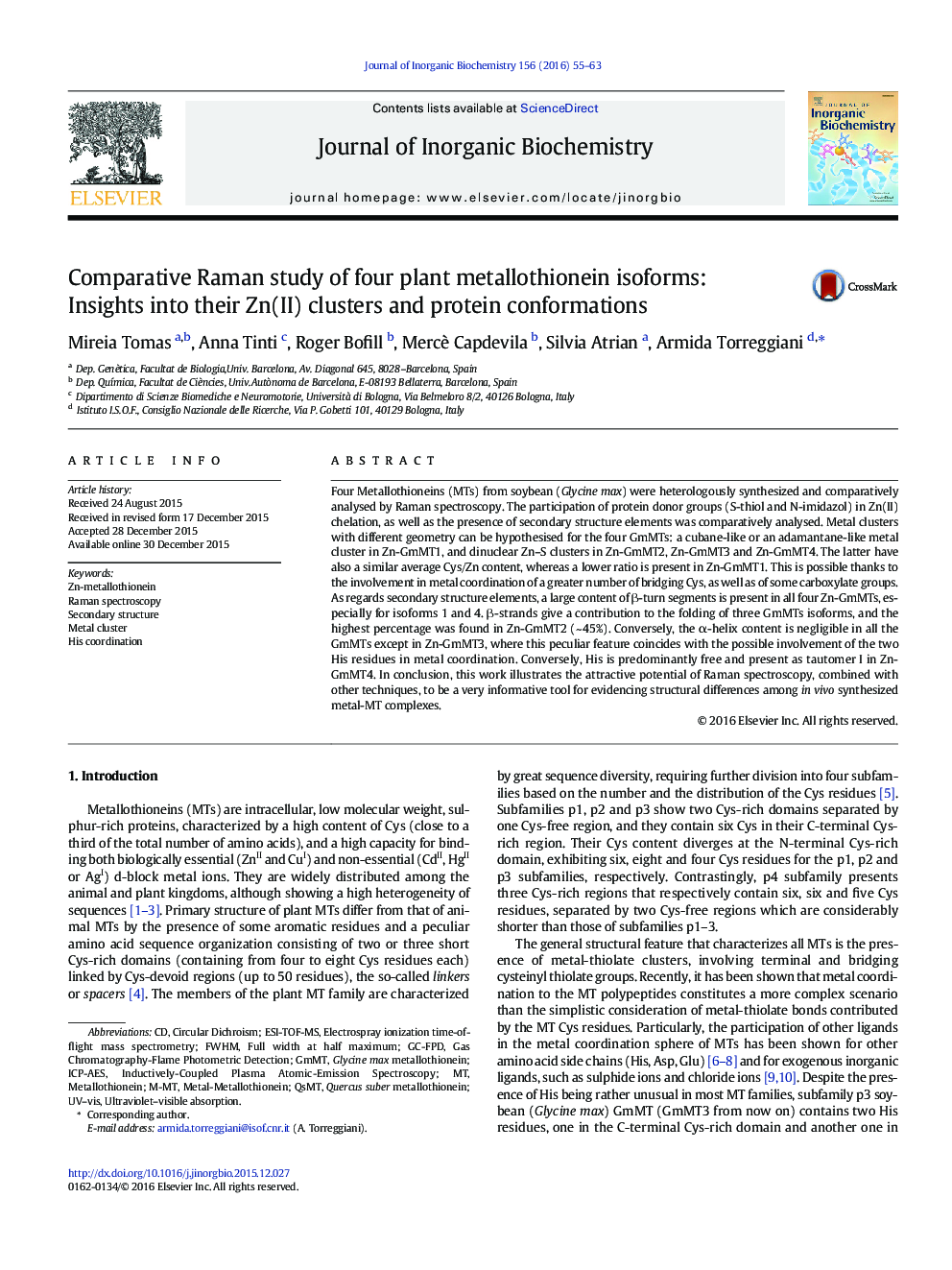| Article ID | Journal | Published Year | Pages | File Type |
|---|---|---|---|---|
| 1316425 | Journal of Inorganic Biochemistry | 2016 | 9 Pages |
•Metal clusters with different geometry in Zn-Glycine max metallothioneins (GmMTs)•Participation of metal ligands other than cysteines such as COO− and His (in GmMT1 and GmMT3, respectively)•GmMT1 quite particular: lower Cys/Zn ratio than the others GmMTs and a minor conformation variety•In all GmMTs large amount of β-turns and in three of them also β-strand elements•Raman spectroscopy as an extremely valuable technique for structural analyses on metal-MT complexes
Four Metallothioneins (MTs) from soybean (Glycine max) were heterologously synthesized and comparatively analysed by Raman spectroscopy. The participation of protein donor groups (S-thiol and N-imidazol) in Zn(II) chelation, as well as the presence of secondary structure elements was comparatively analysed. Metal clusters with different geometry can be hypothesised for the four GmMTs: a cubane-like or an adamantane-like metal cluster in Zn-GmMT1, and dinuclear Zn–S clusters in Zn-GmMT2, Zn-GmMT3 and Zn-GmMT4. The latter have also a similar average Cys/Zn content, whereas a lower ratio is present in Zn-GmMT1. This is possible thanks to the involvement in metal coordination of a greater number of bridging Cys, as well as of some carboxylate groups. As regards secondary structure elements, a large content of β-turn segments is present in all four Zn-GmMTs, especially for isoforms 1 and 4. β-strands give a contribution to the folding of three GmMTs isoforms, and the highest percentage was found in Zn-GmMT2 (~ 45%). Conversely, the α-helix content is negligible in all the GmMTs except in Zn-GmMT3, where this peculiar feature coincides with the possible involvement of the two His residues in metal coordination. Conversely, His is predominantly free and present as tautomer I in Zn-GmMT4. In conclusion, this work illustrates the attractive potential of Raman spectroscopy, combined with other techniques, to be a very informative tool for evidencing structural differences among in vivo synthesized metal-MT complexes.
Graphical abstractStructural differences among in vivo synthesized Zn-metallothionein (MT) complexes from the four subfamilies of the soybean (Glycine max) MT system were revealed by using a very promising experimental approach consisting in using Raman spectroscopy, in combination with other analytical and spectroscopic strategies.Figure optionsDownload full-size imageDownload as PowerPoint slide
